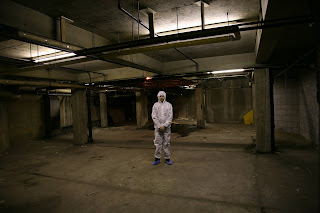Modern artists are becoming more and more influenced by what they see on screen. Up until this century film was still relatively new, but now in the 21st century film is having a bigger than ever impact on the way artists work.
The works of Edward Hopper are often said to portray a cinematic presence, as if they were a filmsetting from a storyboard waited to be acting in, and his imaginary is often reminiscent of Hollywood Film Noir. A perfect example of the connection between the two is Ernest Hemingway’s 1946 classic ‘The Killers’, a film noir American Diner as well as well as scenes in Gas stations.

Hoppers most famous painting is Diner setting called Nighthawks, where he emulates the mood and atmosphere of America at the time. Although ‘Hopper denied that he purposely infused any of his paintings with symbols of isolation and emptiness, he acknowledged of Nighthawks that, “unconsciously, probably, I was painting the loneliness of a large city.” The urban landscape which hopper replicates are more loaded and full of anticipation without people to distract you from the atmosphere created. It is as if they are films waiting to happen. The emptiness of his rooms is what create the ambient tension and portray the filmic setting.

Light is another fiundamental characteristic in creating in creating atmospheric space. In nighthawks the viewer is drawn into the light shinning from the interior of the diner.
Hoppers understanding of the expressive possibilities of light playing upon the simplified shapes gives the painting its beauty. Fluorescent lights had just come into use in the early 1940s, and the errie glow flooding the dark streetcorner may be attributed to this innovation.’ The contrast between the lights of the inside against the dark of the night, is what gives the painting its Film-noir Characteristics.
Michael Raedecker is another artist who I have looked at, use uses space predominatly to create an atmospheric setting. ;His empty haunting images are often compared to film , and are familiar within horror settings.’ He is most well known for painting timeless subjects including lanscapes, interioprs, still life’s and portraits. The clever use of space and lighting used, adds to the foeboding anticipation, in whch the viewer gets drawn into.
One of my favourite paintings of his is called ‘Ins and Outs’, which is a ‘subline dream home’, set in isolation, in the ‘dead of night’

When I first saw it I was drawn into it, as if standing in the eerie location, on a set of a horror film, where gruesome events are about to take place. The first film that I think of is Wes Cravens Scream, where the girl is by herself at home, at night, in the middle of nowhere. The space within the painting adds to the anxiety of the setting, and the contrasting light and dark, is what adds to the chilling atmosphere. Again, like Hopper, because there are no characters, your imagination runs wild, and the painting can become whatever you want it to be.
Michael Raedecker is a big fan of film, especially anything with a grandiose American landscape, the untamed freedom of the west. In beam he paints a lonely cabin in the woods - but this is no ordinary night scene: it's almost like the painting has been solarised. A strange halo glow radiates from the trees, the crackling surface of the ground flickers between positive and negative light like an unnatural frost effect. There are shadows everywhere, distinctly pronounced in a conscious mirroring of the image: a double painting in one. This is a scene which is impossible in nature but completely commonplace in Michael Raedecker's imagination and in spaghetti westerns. Raedecker got the idea from night scenes in old cowboy flicks, which were shot in the daytime with a filter over the lens.
A director who I am influenced by is David Lynch. Directing is his core job, second being artist. Lynch describes his paintings like how he sees his films; he says they are “lost in darkness and confusion”
His distinctive art direction, with his sparingly detailed use of lighting (that makes you realize how much you take light for granted within a film) and all those textured layeryed sound effects’ is noticeable to anyone who watchs one of his films, and is the reason he is popular with the ‘art-house’ crowd and cult followers.
Lynch has many trade marks, which allow the audience insight into his characters souls, adding a surreal atmosphere helping the audience unlock clues into his puzzle pictures.
Another Lynch trade mark is the ‘use of slow motion shots during key scenes of violence’, which helps create a distorted dream like world which emphasises the atmospheric space within the shot; time is drawn out to prolong what is happening, which resembles a real life dream we can all realte too. He also use strobe lights to create a sense of dream and create a tense atmosphere.














